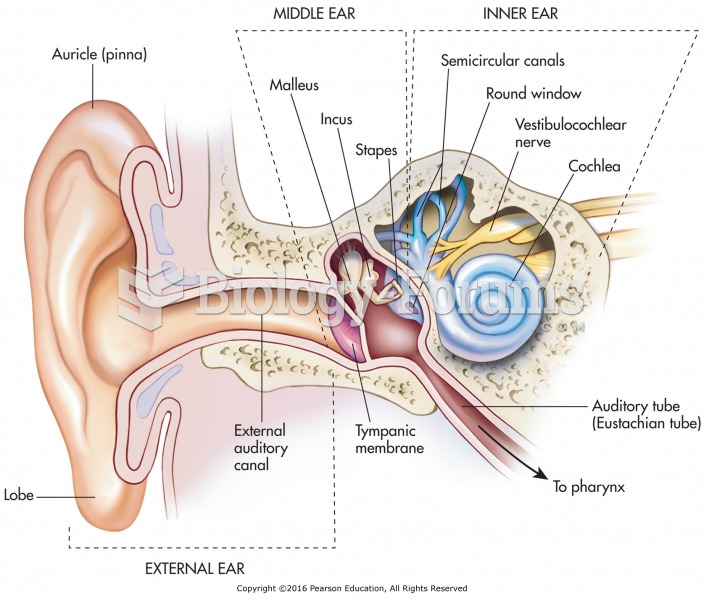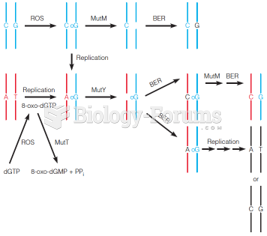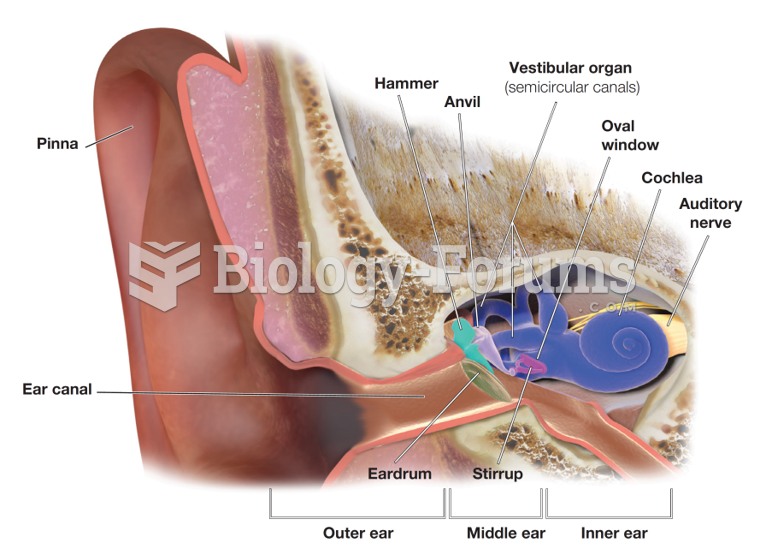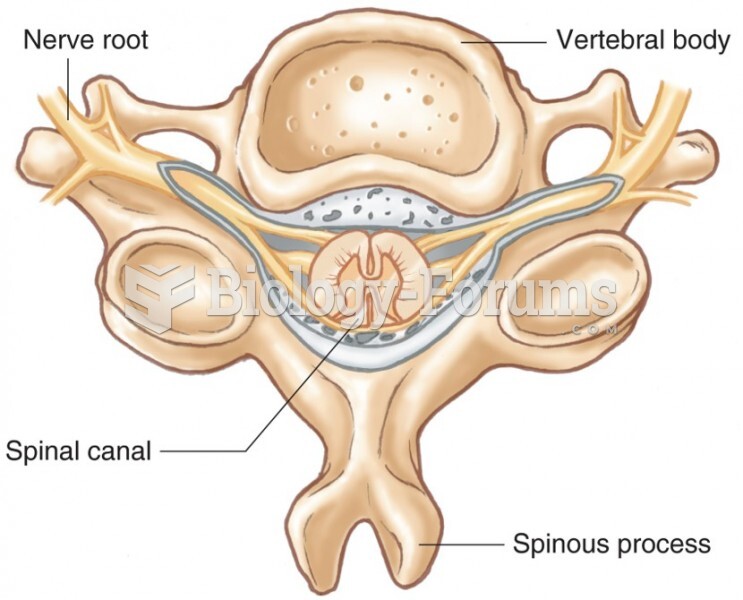|
|
|
Prostaglandins were first isolated from human semen in Sweden in the 1930s. They were so named because the researcher thought that they came from the prostate gland. In fact, prostaglandins exist and are synthesized in almost every cell of the body.
Children of people with alcoholism are more inclined to drink alcohol or use hard drugs. In fact, they are 400 times more likely to use hard drugs than those who do not have a family history of alcohol addiction.
As of mid-2016, 18.2 million people were receiving advanced retroviral therapy (ART) worldwide. This represents between 43–50% of the 34–39.8 million people living with HIV.
Always store hazardous household chemicals in their original containers out of reach of children. These include bleach, paint, strippers and products containing turpentine, garden chemicals, oven cleaners, fondue fuels, nail polish, and nail polish remover.
The familiar sounds of your heart are made by the heart's valves as they open and close.
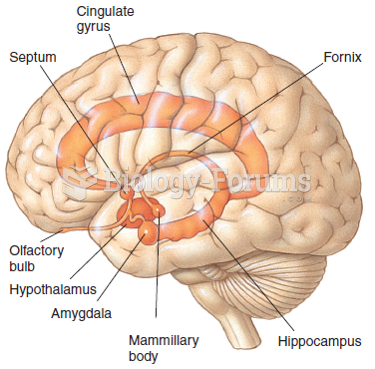 The location of the major limbic system structures. In general, they are arrayed near the midline in ...
The location of the major limbic system structures. In general, they are arrayed near the midline in ...
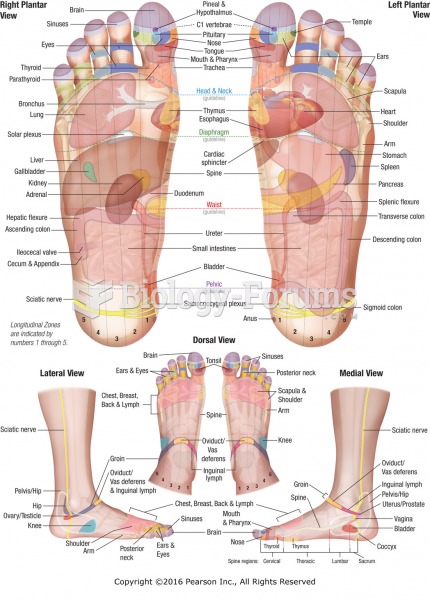 Reflexology chart showing location of reflexes with corresponding anatomical structures and organs ...
Reflexology chart showing location of reflexes with corresponding anatomical structures and organs ...


